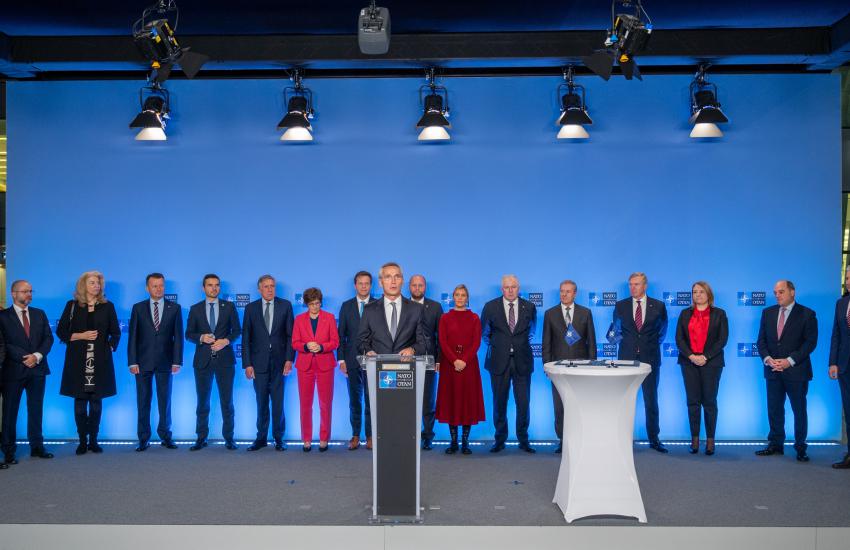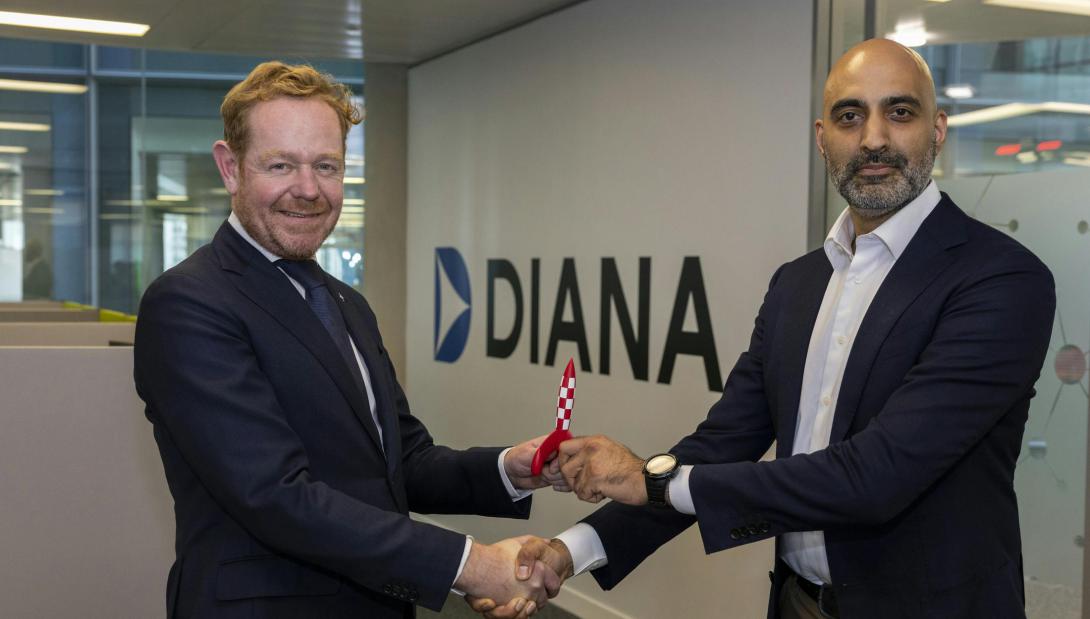New Innovation Offers Pipeline for Untapped Talent
NATO has launched an open invitation to innovators seeking to provide new capabilities to the participating armed forces. The Defense Innovation Accelerator for the North Atlantic, or DIANA, has launched a first challenge.
“We’re after the best innovators from across the alliance and, hopefully, I’ve reemphasized to you this idea of dual use, and the fact that we’re trying to solve security and defense problems with this dual-use narrative,” DIANA’s managing director, Deeph Chana told journalists.
This first challenge launched in June sought to engage 30 nascent companies and fund them with $110,000 and the possibility to obtain up to $325,000.
“Identifying, developing and deploying dual-use technologies are going to be crucial as we tackle the many challenges we face. Participants in DIANA’s unique program will get significant early-stage funding, commercial advice and the opportunity to test their ideas at some of the world’s leading facilities,” Chana said in a statement.
“The first DIANA challenge was launched in June 2023 and focused on energy resilience, secure information sharing, and sensing and surveillance,” said Andrew McKelvey, spokesperson for the accelerator in Canada’s regional office.
While there is hype around the 74-year-old alliance adopting modern ideas, its leader treads cautiously, addressing the accelerator’s first steps.
“It’s a pilot here. We’re going to be learning as we go, so it’s very important that we use the pilot phase to actually try out a few things to see what works, see what doesn’t and then use the information from that to iterate and develop a better program for next year,” Chana told journalists.
DIANA was conceived at the 2021 NATO Summit in Brussels. There, members agreed to launch the incubator to “foster transatlantic cooperation on critical technologies, promote interoperability among Allied forces and harness civilian innovation by engaging with academia and the private sector,” according to its website.
The goal is to find new technologies to be shared among all participants in NATO, and the areas of interest are artificial intelligence, autonomy, quantum technologies, biotechnologies and human enhancement, hypersonic systems, space, novel materials and manufacturing, energy and propulsion, and next-generation communications networks.
This first program is nonexclusive. Companies can receive several sources of cash, including NATO’s.
“You may have received funding through some other route before, provided that your idea is fresh, is innovative and it hits the brief in terms of the challenge. We’re going to consider what you’re doing; I can envisage a situation where you might see a lot of startups who have received—let’s say—some national funding, coming to DIANA for follow-on funding or for augmented funding,” Chana told SIGNAL Media.
One of the key steps is a vetting process expected to guarantee the safe acquisition of products and services that the program accelerates, according to Chana.
The result will be to “pair up trusted investors that are vetted with startups that are also vetted because, for the defense sector, it is not just the technology that they are interested in. They’re interested in whether this technology comes from a trusted source,” according to Oliver Tsarski, innovation lead at the Estonian Ministry of Defense.
DIANA can be accessed through national and regional offices. There are dozens of centers across Europe, some specialized in specific capabilities, others working across the board.
London and Halifax, Canada, are the regional offices catering to each side of the Atlantic. Tallinn, Estonia, is a regional hub.
“DIANA will stimulate the Alliance’s innovators and technology leaders, while providing innovative solutions to emerging challenges faced by the Alliance,” McKelvey told SIGNAL Media in a written interview.

While Halifax is the main office in the Americas, two testing centers are located on both coasts of the United States.
“We need people driven to be ‘catalysts for global impact’—and we need to grow that population. By bringing together entrepreneurial academia, industry and government individuals from across NATO, DIANA will allow the NATO alliance and the United States to greatly advance innovation efforts,” said Jeffrey Singleton, U.S. representative to the board of directors for the NATO DIANA Initiative, in a statement.
While the 2023 challenge focuses on dual-use technologies for energy resilience, secure information sharing, and sensing and surveillance, the initiative casts the widest net possible, leveraging resources from countries and facilities with a variety of skills and capabilities.
“We’re not overly specifying, whether we’re looking for very focused specialty or more generalization, but we’ll take all of those in, and then hopefully be able to route our companies and signpost them to the right locations so they can actually engage with the best from across the alliance,” Chana told SIGNAL Media.
Startups will gain access to a network of nearly 90 testing centers in all member states. These will help de-risk, demonstrate and validate their proposals.
DIANA specifies that those who succeed and move along the pipeline will gain vantage access to the NATO Innovation Fund.
This fund has a $1 billion capitalization and shares the DIANA mandate of bringing new dual-use capabilities from alliance members.
Related Article: See Where Cyber Meets the Edge
Unlike DIANA challenges that open and then close, the fund will remain open for 15 years. Investment for this fund comes from a subset of NATO members, but those who succeed through DIANA will gain fund experience and contacts.
Private equity companies and other sources of funding are compatible with capital from this fund.
The NATO Investment Fund is the world’s first multi-sovereign venture capital fund, according to the alliance.
Beyond present capabilities, creating a talent pipeline for new capabilities will reveal a literal map.
“One thing, which definitely is going to happen across the alliance, is better situational awareness of where talent and innovation sit,” Chana said.
After gathering information from what is available to the alliance from businesses that were most likely not involved in defense altogether or were restricted to markets in small member economies, it is expected that strategic thinking will be affected.
“We’re also going to get good data points and where we feel we may need to develop some more capacity and get some capacity building going on as well,” Chana explained.
This bottom-up approach focusing on technologies that also have a market among civilian consumers has the potential to change the way NATO conducts business if implemented as planned.






Comments